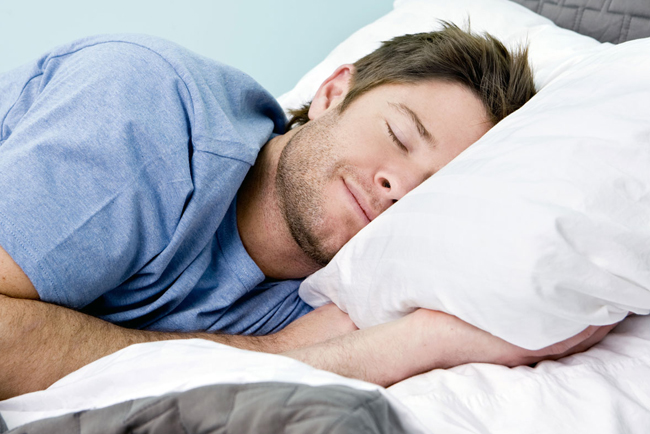Just try a quick experiment: Google search “sleep tips” and check out how many results you get! Clearly, good quality sleep is fleeting for many people when a simple search yields over 350 million results! According to the National Sleep Foundation (NSF), more than 40 million Americans are not getting enough sleep, with 60% of adults experiencing sleep problems a few nights a week.
Insomnia symptoms include: difficulty falling asleep, awakening frequently during the night, awakening too early or not feeling well-rested after a night’s sleep.
Causes of insomnia include: stress, illness (e.g. depression, obesity, hypertension), overactive mind, lifestyle habits, menopause, and side-effects from medication.
Why Good Sleep Matters
Sleep is needed for the body to repair and replenish damaged cells due to stress and ultraviolet rays, to trigger hormones that regulate mood, energy and mental acuity, and for the mind to restore alertness and memory. Adequate sleep is also necessary for the immune system to fight infections, support sugar metabolism, perform productively at work or school and maintain healthy relationships. Chronic insomnia can also lead to obesity, depression, anxiety, diabetes, high blood pressure and heart disease. In a nutshell, good sleep is not a luxury, although it has often become so in our 24/7 lifestyles; rather, it is an essential requirement for well-being, optimal functioning, and quality of life.
Conventional medical treatments of insomnia are prescribed medication, over-the-counter sleep aids or psychotherapy. Some natural approaches include lifestyle or dietary changes and taking natural supplements (melatonin, magnesium).
I Got Rhythm
When George Gershwin composed the classic song “I Got Rhythm”, he didn’t exactly mean his “circadian rhythm”, but it’s definitely worth singing about! The internal clock in the human body, or circadian rhythm, is a 24-hour cycle in the human body as well as in plants and animals which determines sleeping and eating patterns, hormone production, and body temperature, among other good things. It is naturally synchronized with, and affected by, sun rise/sun set and time zones. When functioning properly, this internal clock automatically reminds us to get up when it’s light and wind-down when it’s dark. But when it is disrupted, then natural sleep patterns get off-kilter (you probably notice this especially with jet lag, seasonal time changes or with unusual work hours).
To help keep the circadian rhythm in tune:
· Make sure to get a minimum of 15-30 minutes of sunlight daily (even standing near a window).
· Keep a regular “sleep schedule” for consistency. That means go to bed and wake up at the same times – even on the weekends.
· Avoid naps during the day.
· Develop a down-time or calming ritual before bed. An hour before bed, turn off TVs, computers, and gadgets. Besides being over-stimulating, they also expose us to “blue light” which deceives the circadian rhythm into thinking its daytime. Instead, read a relaxing book, listen to relaxing music or meditate. Read more below on how meditation can improve sleep quality.
· Maintain a balanced diet and eat dinner at least 3 hours before bedtime. Foods that destabilize the body and contribute to insomnia are: alcohol, caffeine, refined carbohydrates, sugar- or salt- rich foods, and junk food (often the hidden ingredient is caffeine). Foods that help reduce insomnia are “magnesium-rich” foods such as: spinach, beans, lentils, avocados, bananas, plain non-fat yogurt, and unrefined grains.
Take the Stairs Instead of the Elevator!
A sedentary lifestyle and lack of physical activity also play a huge part in causing insomnia and, according to the National Institutes of Health, Americans are more sedentary than ever! In the modern information and technological age, when everything is a click or a stone’s throw away, we’re doing disproportionately less physical activity than our grandparents. Sedentary time outside of work in the U.S. increased by about 40% between 1965 and 2009. (C. Matthews, NIH)
Physical inactivity has enormous implications for insomnia, stress and other health issues. In another study, 1.5 billion adults around the world were found to be almost completely sedentary (particularly in high-income countries). In other words, these adults don’t meet the minimum 150 minutes of walking recommended a week, or 20 minutes daily. (P. Hallal et al.) With a correlation between sedentary lifestyles and insomnia, it’s no wonder that the number of sleep institutes and centers in the U.S. has ballooned to 2,500 this year, since the first accredited sleep center opened in 1977.
To prevent insomnia, it is important to do regular aerobic exercise and physical activity throughout the day:
· Exercise at least 30 minutes a day, 5 days a week. Ensure that the exercise routine is completed before dinner, and no later than 7pm to allow the heart rate and body to return to normal well before bedtime.
· Walk or bike to the store instead of driving and play with the kids more. You get the idea: burn energy! This will help to balance the circadian rhythm.
“Aldous, Have you Tried Yogic Breathing?”
When famous British writer Gerard Heard suggested to another famous friend, Aldous Huxley, to try yogic breathing and meditation to cure Huxley’s “insomnia”, it didn’t only change the trajectory of their lives but the innumerable lives of Americans. Both drawn to Eastern philosophies and yogic methods, these two men immigrated to the US in the mid-20th century and became among the first to propagate perennial Eastern teachings. (“American Veda: From Emerson and the Beatles to Yoga and Meditation: How Indian Spirituality Changed the West”, P. Goldberg) The yoga industry has now become a booming $6-billion-a-year industry; and that figure may continue to grow as the healthcare industry endorses more vigorously what Gerard Heard knew – that ancillary health benefits tag along with the spiritual benefits obtained from doing Eastern practices.
Read more about the benefits of Inner Engineering and Shambhavi Kriya.






